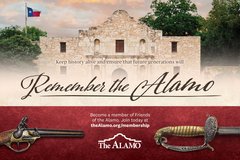The base of the foundation has been confirmed in all three units excavated within the Long Barrack. The archaeologists from Raba Kistner spent the week of September 9–13 finishing up the excavations to expose the foundation in two of the three interior units. In addition, time was spent to gather information concerning the flooring features that had been encountered.
Archaeology Update — Voids Discovered In The North Wall of the Long Barrack
The archaeologists identified several post holes in Excavation Unit 11, located in the central portion of the Long Barrack along the west wall. At the conclusion of the unit excavations, three post holes were identified. One is located under the interior cross-wall, which was constructed during the late 1910s. One post hole was located in the central portion of the unit. A third was observed in the north edge of the unit and can be seen in the profile. There were very few artifacts encountered in this last level of excavation. The materials collected included snail shell, chipped stone fragments, and some small sherds of ceramics.



The excavation unit located on the exterior of the Long Barrack opposite of Excavation Unit 10 continued on throughout the week, uncovering the foundation as well as an architectural feature in the northeast corner of the unit. As the excavations progressed, the artifact density decreased in the deeper levels.
The darker soils, approximately 110 cm (43 inches) below the datum, contained mostly snail shell, chipped stone, Goliad ware pottery, and a few fragments of Spanish Colonial ceramics. As it became clear that the excavations were nearing the base of the foundation, the archaeologists opened a section adjacent to the foundation to confirm. The archaeologists found limestone at approximately 130 cm (51 inches) below datum that does not appear to be integrated with the foundation. These limestone rocks appear to be similar to what was exposed inside the Long Barrack.
The second half of the week focused on documentation of the features, profiles, and the bottom of the foundation. The archaeologists laser scanned the units and created scaled, measured drawings of the stratigraphy. Stratigraphy is the order and position of layers of archaeological remains, which helps our archaeologists determine the time of each layer.
The units located at the north end of the Long Barrack will likely finish being document early during the following week. Of interest, many voids were noted adjacent to the exterior of the north wall of the Long Barrack. The team’s Structural Engineer has been called to examine the exposed portion of the foundation and determine what will need to be done if excavations are needed to continue deeper.




